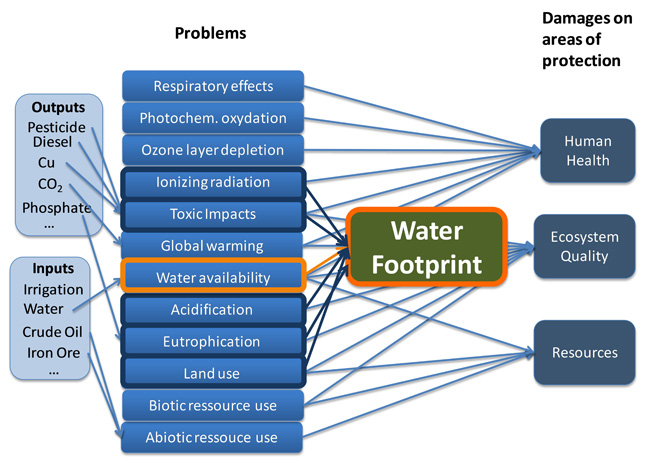Life cycle assessment is a methodology which aims at quantifying potential environmental impacts generated by a human activity on a wide range of environmental issues (climate change, human respiratory impacts, land use, etc.) over the entire life cycle of a product or service. A water footprint is the fraction of those impacts which are related to water. They include impacts associated with water use, and the subsequent effect on water availability for humans and ecosystems, as well as direct impacts on the water resource and its users from emissions to air, soil and water. These later are quantified using the traditional LCA impact categories (e.g. freshwater eutropication, freshwater acidification, human toxicity, eco-toxicity).
A water footprint may be presented as the result of a stand-alone assessment or as a sub-set of results of a larger environmental assessment, such as an LCA. Principles, requirements and guidelines for the assessment of a water footprint are defined in the current DIS2 ISO 14046 document (in date of April 2014). As per this document, a “water scarcity footprint” and a “water availability footprint” assess impacts associated with water use only, whereas a water footprint (no qualifier) assesses all relevant impacts related to water.
The WULCA working group focuses its efforts on development of methods regarding the assessment of impacts associated with water use. Methods assessing direct impacts on water from emissions are being developed elsewhere (e.g. USEtox, etc.) and are used to complement water use impact assessment methods in order to provide a comprehensive water footprint.
